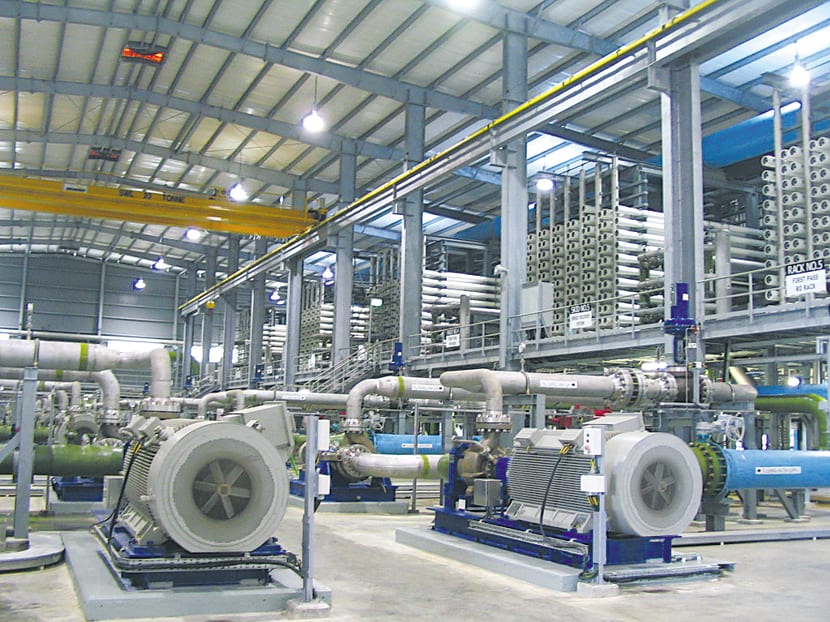Climate change forces S’pore to look at 5th desalination plant, in Jurong
SINGAPORE — Just seven months after announcing the construction of Singapore’s fourth desalination plant in Marina East, the Government is exploring the development of a fifth desalination plant, on Jurong Island, to “further enhance resilience”.
SINGAPORE — Just seven months after announcing the construction of Singapore’s fourth desalination plant in Marina East, the Government is exploring the development of a fifth desalination plant, on Jurong Island, to “further enhance resilience”.
The move comes as more extreme weather patterns due to climate change poses new challenges to Singapore’s water sustainability, said Minister for the Environment and Water Resources Masagos Zulkifli on Tuesday (April 12), noting the need to further strengthen the country’s water supply resilience.
Speaking during the debate on his ministry’s budget in Parliament on Tuesday, Mr Masagos painted a picture of how effects of drier weather on water supply has already been seen.
“The drier weather this couple of years saw the water level in Linggiu Reservoir drop to historic lows, from about 80 per cent in 2015 to 36.9 per cent as we speak and decreasing when there’s no rain. This has impacted the reliability of imported water that supplies half our current needs,” he said.
“Fortunately, because we have diversified our water sources, our sources, we have been able to mitigate the impact of the drier weather. But we cannot be complacent.”
Under the 1962 water agreement between Singapore and Malaysia, Singapore can currently extract and treat up to 250 million gallons of water per day (equivalent to 60 per cent of Singapore’s daily water needs) from the Johor River. Water from Linggiu Reservoir is released into the Johor River to prevent saltwater intrusion from the sea into the river, as salty water cannot be treated by the water plant further downstream.
Water levels in Linggiu Reservoir has seen flagged as an area of concern four times in the last eight months.
Last August, Dr Vivian Balakrishnan, who was then helming the environment ministry, had said Linggiu Reservoir’s water levels were at a historic low of 54.5 per cent and have not recovered since the dry spell in early 2014. He had also said there had been 77 occasions, at that stage, where the PUB was temporarily unable to draw water from the river due to salinity intrusions caused by tide levels.
In November, Mr Masagos said the reservoir hit another all-time low of 43 per cent. Last month, the minister said the levels have receded to 42 per cent due to the prolonged dry weather, adding that PUB has been pumping an average of 16 million gallons of NEWater per day into Singapore’s reservoirs to maintain healthy water levels.
Singapore currently has two desalination plants — SingSpring and Tuaspring — which can produce 100 million gallons of freshwater per day from seawater. This can meet almost 25 per cent of the current water demand of 430 million gallons a day.
A third desalination plant in Tuas is under construction and is due to be completed next year while the fourth desalination plant in Marina East and will be completed towards the end of 2019. Both plants are able to produce 30 million gallons of freshwater per day each.
Under the Water Master Plan 2016 review, the fifth NEWater plan at Changi will also be completed at the end of the year and will be able to produce 50 million gallons per day of NEWater. NEWater can currently meet 30 per cent of Singapore’s total water demand.
PUB is also planning to harness more seawater as a resource and will work with companies on Jurong Island to meet cooling demands with seawater instead of freshwater supply, noted Mr Masagos.
About one-tenth of Singapore’s water demand now comes from Jurong Island, which is home to around a hundred petrochemical, specialty chemical and supporting companies. But a large portion of water supplied to them is lost to the atmosphere from cooling processes, reducing the amount that can be collected for reuse.







